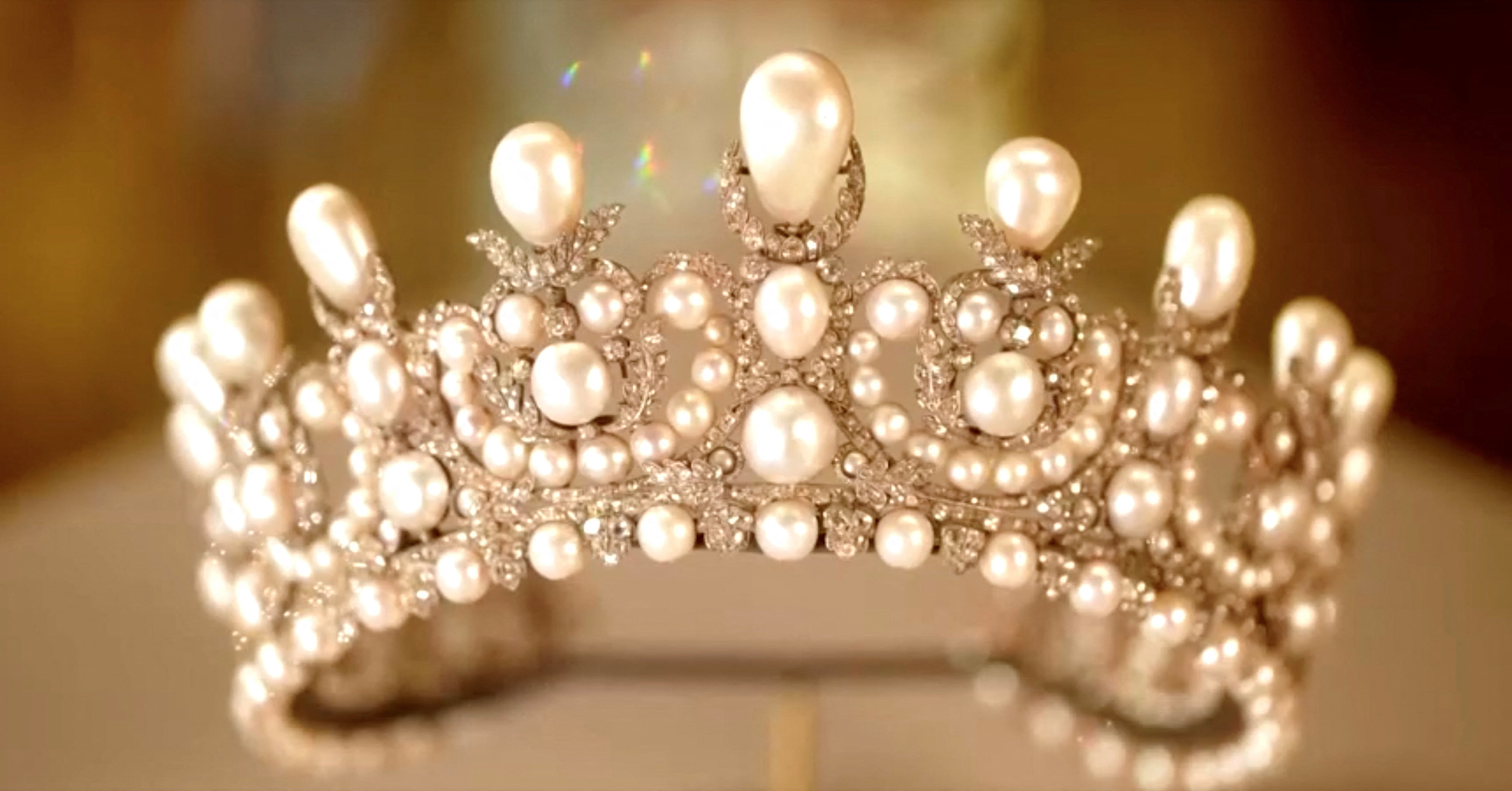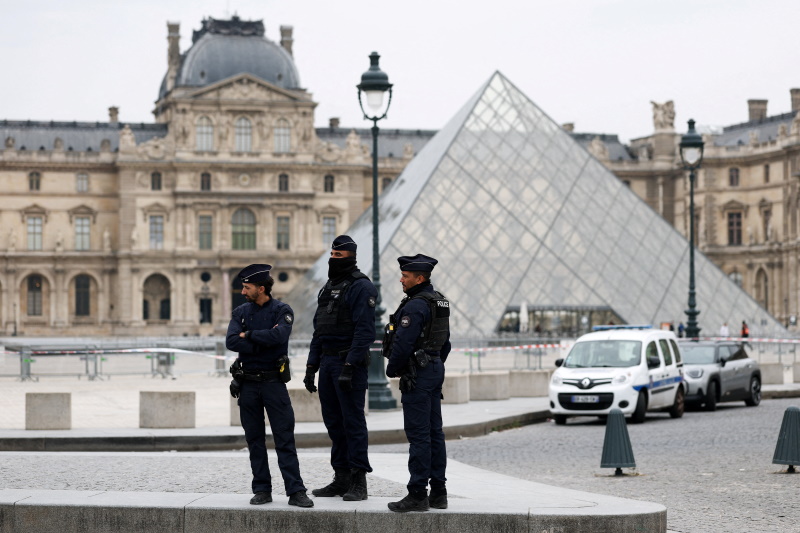
"It is important to remember that this damage is an economic damage, but it is nothing compared to the historical damage caused by this theft," the prosecutor told RTL radio.
In what some politicians branded a national humiliation, four people broke into the Louvre in the French capital on Sunday using a crane to smash an upstairs window while the popular attraction was open.
They took objects from a gallery for royal jewellery before escaping on motorbikes.
The eight items of stolen jewellery included a tiara and earrings from the set of Queen Marie-Amélie and Queen Hortense, of the early 19th century.
The crown of Empress Eugenie was found outside the museum, apparently dropped during the getaway.

'Unlikely' to recover loot
Crime gangs around Europe are increasingly robbing valuable jewels and gold from cash-needy museums like the Louvre, but while police often catch the thieves, they struggle to recover the priceless goods, law enforcement and art experts say.
Only a small pool of criminals would be capable of such a job as Sunday's audacious robbery and may already be known to police, the specialists say. But the objects themselves could be quickly broken down into component parts and sold on.
"If I steal a Van Gogh, it's a Van Gogh. I can't dispose of it through any other channel than an illicit art market," said Marc Balcells, a Barcelona-based expert in crimes against cultural heritage. "But when I am stealing ... jewellery, I can move it through an illicit market as precious stones."
The brazen heist of crown jewels from the Louvre, the world's most visited museum, has been decried by some as a national humiliation and sparked security checks across France's multitude of cultural sites.
"If you target the Louvre, the most important museum in the world, and then get away with the French crown jewels, something was wrong with security," art investigator Arthur Brand said.
Officials at the Louvre, home to artworks such as the Mona Lisa, had in fact already sounded the alarm about lack of investment. And at least four French museums have been robbed in the last two months, according to media reports.
On Tuesday, prosecutors said they had charged a Chinese-born woman for the theft of six gold nuggets worth about €1.5 million from Paris's Museum of Natural History last month. She was arrested in Barcelona trying to dispose of some melted gold, they said.
Christopher Marinello, founder of Art Recovery International, which tracks stolen art, said museum heists were on the rise across Europe and further afield. He cited cases in the Netherlands, France, Egypt.
"If you have jewels or gold in your collections, you need to be worried."
Whodunnit?
Prosecutors have entrusted the investigation to a specialised Paris police unit known as the BRB, which is used to dealing with high-profile robberies.
Former police officer Pascal Szkudlara, who served in the unit, said the BRB handled the 2016 Kim Kardashian probe, when Paris thieves stole her $US4 million ($NZ6.9 million) engagement ring, as well as a recent spate of kidnappings of wealthy crypto bosses.
He said the BRB has about 100 agents, with over a dozen specialised in museum thefts. Investigators will look at video footage, telephone records, and forensic evidence, while informants will also be activated.
"They can have teams working on it 24/7 and for a long period," Szkudlara said, expressing "100%" confidence the thieves would be caught.
Police will be poring over security footage going back weeks, looking to identify suspicious people casing out the museum, Brand said.
Corinne Chartrelle, who previously worked at the French Police's Central Office for the Fight against Trafficking in Cultural Property, said the jewels could feasibly end up in a global diamond centre like Antwerp where there "are probably people who aren't too concerned about the origin of the items."
The diamonds could also be cut into smaller stones and the gold melted down, leaving buyers unaware of their provenance. If the thieves feel the net closing, they could chuck or destroy the loot altogether.
Police are clearly in a race against time.
"Once they're been cut into smaller jewels, the deed is done. It's over. We'll never see these pieces again intact," said Marinello. "It's a very small percentage, recovering stolen artworks. When it comes to jewellery, that percentage is even less."














